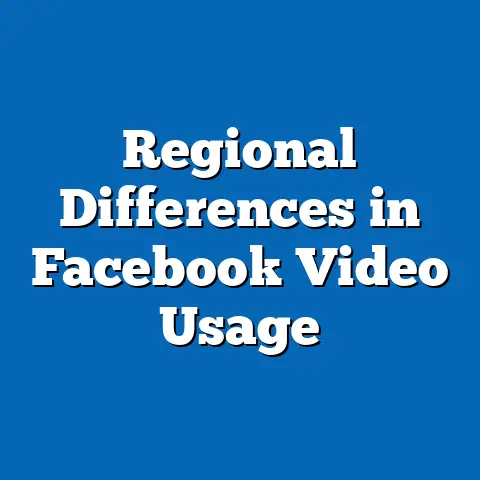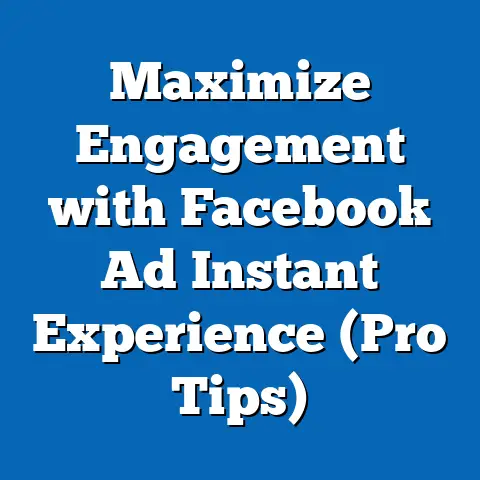Supercharge Results with a Facebook Ads Audit (Expert Guide)
Supercharge Results with a Facebook Ads Audit: An Expert Guide to Maximizing Digital Marketing Impact
Introduction: The Emotional Stakes of Digital Advertising Success
Imagine pouring countless hours and significant financial resources into a Facebook advertising campaign, only to see lackluster results—clicks that don’t convert, budgets that vanish without a trace, and a sinking feeling that your message is lost in the digital noise. For businesses, marketers, and entrepreneurs, this frustration is all too real, as the promise of reaching a vast, targeted audience on one of the world’s largest social platforms often collides with the complexities of an ever-evolving algorithm and fierce competition. Yet, there’s a powerful solution that can turn this frustration into triumph: a comprehensive Facebook Ads audit.
Defining Characteristics of a Facebook Ads Audit
At its core, a Facebook Ads audit is a systematic evaluation of a campaign’s performance, structure, and strategy to identify areas of improvement and optimize outcomes. It encompasses a deep dive into metrics such as click-through rates (CTR), cost-per-click (CPC), conversion rates, audience targeting, creative assets, and budget allocation. Unlike a casual review, an audit is methodical, data-driven, and often conducted with the aid of specialized tools and expertise.
Key components of a successful audit include assessing ad relevance scores, examining audience overlap, analyzing placement performance (e.g., News Feed vs. Stories), and scrutinizing the alignment between ad copy, visuals, and landing pages. Additionally, it involves benchmarking against industry standards and competitor strategies to ensure campaigns remain competitive. The ultimate goal is to eliminate waste, enhance efficiency, and align campaigns with overarching business objectives.
An audit is not a one-time fix but rather a cyclical process that adapts to changing platform algorithms, audience behaviors, and market trends. It requires a blend of analytical rigor and creative problem-solving, making it both a science and an art. For businesses, this process can mean the difference between a campaign that barely breaks even and one that drives exponential growth.
Historical Context: The Evolution of Facebook Advertising
To fully appreciate the importance of a Facebook Ads audit, it’s essential to understand the historical trajectory of digital advertising on the platform. Launched in 2004 as a social networking site for college students, Facebook quickly grew into a global phenomenon, surpassing 100 million users by 2008. It was during this period of rapid expansion that the platform introduced its first advertising product, “Flyers,” in 2006, allowing businesses to promote events and services to targeted demographics.
By 2007, Facebook rolled out its Ads platform, enabling more sophisticated targeting based on user data such as interests, location, and demographics—a revolutionary shift from traditional online banner ads. The introduction of the News Feed as a prime advertising real estate further amplified its potential, giving brands direct access to users’ daily interactions. Over the next decade, innovations like Custom Audiences (2012), Lookalike Audiences (2013), and the integration of Instagram Ads (2015) transformed Facebook into a powerhouse for digital marketers.
However, with great power came great complexity. The platform’s algorithm updates, privacy policy changes (notably after the 2018 Cambridge Analytica scandal), and the introduction of Apple’s iOS 14 tracking restrictions in 2021 have continuously reshaped the advertising landscape. These shifts have made it increasingly difficult for advertisers to maintain consistent performance without regular optimization and auditing. Understanding this historical context reveals why a Facebook Ads audit is not just beneficial but necessary in navigating a platform that evolves at breakneck speed.
Societal Implications: The Broader Impact of Optimized Digital Advertising
Conversely, poorly managed or unoptimized campaigns can contribute to digital clutter, user fatigue, and even misinformation if ads are irrelevant or misleading. The Cambridge Analytica scandal highlighted how data misuse in advertising can erode public trust, underscoring the need for transparency and accountability—principles that a thorough audit can help uphold by ensuring compliance with platform policies and ethical standards. Moreover, as society becomes increasingly digitized, the skills and insights gained from mastering platforms like Facebook Ads can empower individuals and communities to engage with the digital economy more effectively.
On a cultural level, optimized advertising influences how brands connect with diverse audiences, shaping narratives around inclusivity, sustainability, and social responsibility. An audit that refines targeting and messaging can help ensure that campaigns resonate authentically rather than alienate or exploit. Thus, the ripple effects of a well-executed Facebook Ads audit touch on economic equity, cultural representation, and digital ethics—making it a tool with profound societal relevance.
Why Conduct a Facebook Ads Audit? The Case for Action
Before diving into the “how” of conducting an audit, let’s explore the “why.” Many businesses launch Facebook Ads campaigns with high hopes but limited ongoing evaluation, leading to wasted budgets and missed opportunities. According to a 2022 report by Hootsuite, the average CPC on Facebook Ads across industries is $0.97, but costs can skyrocket without proper optimization, especially in competitive niches like e-commerce or finance.
An audit helps identify inefficiencies such as underperforming ad sets, irrelevant audiences, or high-frequency fatigue (when users see the same ad too often). It also uncovers hidden opportunities, such as untapped demographics or underutilized ad formats like video or carousel ads. For small and medium-sized businesses (SMBs) operating on tight budgets, an audit can be a game-changer, stretching every dollar further and maximizing impact.
Beyond financial benefits, an audit provides strategic clarity. It aligns campaigns with evolving business goals, whether that’s brand awareness, lead generation, or direct sales. In a landscape where 93% of marketers use Facebook Ads (per Statista, 2023), standing out requires not just creativity but precision—a precision that only a detailed audit can deliver.
Step-by-Step Guide to Conducting a Facebook Ads Audit
1. Define Objectives and Gather Data
The first step in any audit is to establish clear objectives. Are you aiming to reduce costs, increase conversions, or improve brand visibility? Defining these goals sets the framework for analysis.
Next, gather historical data from your Facebook Ads Manager, focusing on key performance indicators (KPIs) like impressions, clicks, conversions, and cost metrics over a specific timeframe (e.g., the past 30 or 90 days). Use tools like Facebook’s Insights or third-party platforms such as Hootsuite or Sprout Social to compile comprehensive reports. This data forms the foundation of your audit, providing a baseline to measure against.
2. Evaluate Campaign Structure
Examine the overall structure of your campaigns, including how they’re organized into campaigns, ad sets, and individual ads. A common mistake is having too many ad sets with overlapping audiences, which can drive up costs through internal competition. Ensure each campaign has a distinct purpose (e.g., awareness, consideration, conversion) and that ad sets are segmented logically by audience or product.
Check for inactive or paused campaigns that may clutter your account, as well as outdated objectives that no longer align with platform updates. A streamlined structure enhances manageability and performance, making it easier to allocate budgets effectively.
3. Analyze Audience Targeting
Audience targeting is the heartbeat of Facebook Ads, and an audit must scrutinize its accuracy and relevance. Review your Custom Audiences, Lookalike Audiences, and interest-based targeting to ensure they align with your ideal customer profile. Tools like Audience Insights can reveal whether your ads are reaching the intended demographic or if adjustments are needed.
Look for signs of audience fatigue—high frequency rates or declining engagement—and consider refreshing your targeting parameters or excluding overexposed segments. Additionally, evaluate whether exclusions (e.g., past converters) are properly set to avoid wasting budget on irrelevant users.
4. Assess Creative Performance
The visual and textual elements of your ads are critical to capturing attention in a crowded digital space. Audit your ad creatives by analyzing metrics like CTR and engagement rate to identify which images, videos, or copy resonate most with your audience. Test variations if data shows underperformance, and ensure that creatives adhere to Facebook’s ad policies to avoid disapprovals.
Pay attention to relevance scores (a metric from 1-10 indicating how well your ad matches your audience’s interests). Low scores often signal a disconnect between creative and targeting, necessitating adjustments. A/B testing can be a valuable follow-up to an audit, helping refine what works.
5. Review Budget and Bidding Strategies
Budget allocation and bidding strategies often reveal inefficiencies during an audit. Assess whether your daily or lifetime budgets are distributed effectively across campaigns and ad sets. For instance, are high-performing ads constrained by low budgets while underperforming ones drain resources?
Evaluate your bidding strategy—whether manual or automated (e.g., cost cap, bid cap)—to ensure it aligns with your goals. If costs are rising, consider switching to a different optimization event (e.g., from clicks to conversions) or adjusting bid limits. An audit can uncover whether you’re overpaying for results and guide reallocation for maximum ROI.
6. Examine Placement and Device Performance
Facebook offers multiple ad placements (e.g., News Feed, Stories, Audience Network) and device options (desktop vs. mobile). An audit should analyze which placements and devices yield the best results for your campaigns. For example, if mobile users convert at a higher rate, consider prioritizing mobile placements or optimizing landing pages for smaller screens.
Look for placements with high costs but low returns, and use the “Breakdown” feature in Ads Manager to dissect performance by placement and device. This granular analysis ensures you’re not wasting budget on ineffective channels.
7. Measure Conversion Tracking and Attribution
Accurate conversion tracking is essential for understanding campaign impact. Audit your Facebook Pixel setup to confirm it’s correctly installed and tracking key events like purchases, sign-ups, or page views. Misconfigured pixels can skew data, leading to flawed decision-making.
Additionally, review your attribution model (e.g., 7-day click vs. 1-day view) to ensure it reflects how users interact with your ads. With Apple’s iOS 14 updates limiting tracking, consider leveraging aggregated event measurement and exploring alternative attribution tools to maintain accuracy.
8. Benchmark Against Industry Standards
Contextualize your performance by benchmarking against industry averages for metrics like CTR, CPC, and conversion rates. Resources like WordStream’s annual Facebook Ads benchmarks provide valuable reference points. If your metrics lag behind, identify specific areas (e.g., targeting, creative) for improvement.
Competitor analysis can also inform your audit. Use tools like Facebook’s Ad Library to study competitors’ messaging, visuals, and offers. While direct emulation isn’t the goal, understanding market trends can inspire strategic adjustments.
9. Identify Compliance and Policy Issues
Facebook’s advertising policies are strict, and non-compliance can result in ad disapprovals or account suspensions. Audit your campaigns for potential violations, such as misleading claims, prohibited content (e.g., tobacco, weapons), or improper use of personal data. Ensure landing pages meet quality standards and that ad copy avoids sensationalism.
Post-audit, implement best practices for compliance, such as transparent disclosures and adherence to data privacy regulations like GDPR or CCPA. This step protects your account and builds trust with your audience.
10. Develop an Action Plan
The final step of a Facebook Ads audit is translating insights into actionable recommendations. Create a prioritized list of changes—whether it’s refining targeting, refreshing creatives, or reallocating budgets—and assign timelines and responsibilities. Monitor performance post-implementation to measure the audit’s impact, and schedule regular follow-up audits (e.g., quarterly) to maintain optimization.
Documenting findings in a detailed report ensures transparency and provides a reference for future campaigns. An action plan transforms raw data into tangible results, closing the loop on the audit process.
Technological Factors: Navigating Platform Tools and Algorithm Shifts
Technology plays a pivotal role in the effectiveness of a Facebook Ads audit, as the platform’s tools and algorithms directly influence campaign outcomes. Features like Ads Manager, Business Manager, and the Facebook Pixel provide the data backbone for audits, while third-party tools like AdEspresso or Revealbot offer advanced analytics and automation. Staying abreast of technological updates—such as new ad formats or targeting options—is crucial for maintaining a competitive edge.
However, technological challenges, such as algorithm changes or privacy restrictions, can complicate audits. For instance, Apple’s iOS 14 update reduced the accuracy of tracking, forcing advertisers to rely on aggregated data and alternative metrics. An effective audit must account for these shifts, adapting strategies to prioritize first-party data and platform-native solutions like Conversions API.
Artificial intelligence (AI) and machine learning also shape modern audits by powering automated bidding and audience optimization. While these tools can enhance efficiency, they require human oversight to ensure alignment with business goals. Balancing technological reliance with strategic insight is key to a successful audit in a tech-driven advertising landscape.
Economic Impacts: Maximizing ROI in a Competitive Market
Economically, a Facebook Ads audit can have transformative effects on a business’s bottom line. With global digital ad spending projected to reach $740 billion by 2025 (per eMarketer), optimizing platforms like Facebook is essential for cost efficiency. An audit reduces wasteful spending, ensuring budgets are directed toward high-impact strategies.
For SMBs, this economic advantage is particularly pronounced, as they often lack the resources of larger competitors. A well-executed audit can level the playing field, enabling smaller players to achieve significant results with limited funds. Conversely, for larger enterprises, audits support scalability, ensuring expansive campaigns remain profitable.
The broader economic implication lies in how optimized advertising fuels market growth. Effective campaigns drive consumer spending, support job creation in digital marketing sectors, and foster innovation in ad tech. Thus, the economic ripple effects of a Facebook Ads audit extend beyond individual businesses to influence entire industries.
Social and Cultural Dimensions: Connecting with Diverse Audiences
Socially and culturally, a Facebook Ads audit ensures campaigns resonate with diverse audiences in meaningful ways. By refining targeting and messaging, audits help brands avoid cultural insensitivity or irrelevance, fostering authentic connections. For example, analyzing engagement data can reveal whether ads appeal to specific demographics or if adjustments are needed to reflect cultural nuances.
This cultural alignment is critical in an era where consumers value authenticity and social responsibility. A 2021 survey by Sprout Social found that 70% of consumers expect brands to take a stand on social issues, and an audit can guide messaging to align with these expectations. Furthermore, audits support inclusivity by identifying gaps in audience representation and encouraging broader reach.
Socially, optimized ads contribute to digital literacy by delivering relevant, valuable content rather than spam. They also shape online communities by facilitating connections between brands and consumers. An audit, therefore, is not just a technical tool but a means of enhancing social and cultural engagement in the digital sphere.
Workplace Implications: Empowering Teams and Driving Collaboration
In the workplace, conducting a Facebook Ads audit fosters collaboration and skill development among marketing teams. The process often requires input from multiple stakeholders—data analysts, creative designers, and strategists—promoting cross-functional teamwork. It also provides opportunities for upskilling, as team members learn to navigate complex tools and interpret data.
For agencies managing client accounts, audits build credibility by demonstrating a commitment to results. They provide tangible evidence of value, strengthening client relationships. Internally, audits can streamline workflows by identifying redundancies and clarifying priorities, enhancing overall productivity.
Moreover, the insights gained from audits can inform broader marketing strategies, aligning social media efforts with email, content, and SEO initiatives. This integrated approach maximizes workplace efficiency and positions teams to adapt to future digital trends.
Challenges and Nuances in Conducting a Facebook Ads Audit
While the benefits of a Facebook Ads audit are clear, the process is not without challenges. Data overload can overwhelm inexperienced marketers, as Ads Manager provides a wealth of metrics that require interpretation. Distinguishing between actionable insights and noise is a skill that develops with experience.
Additionally, the diversity of business goals and industries means there’s no one-size-fits-all approach to auditing. A campaign focused on e-commerce sales will prioritize different metrics than one aimed at nonprofit awareness. Tailoring the audit to specific objectives is essential for relevance.
External factors, such as seasonal trends or economic downturns, can also skew data, requiring contextual analysis. For instance, a dip in performance during a holiday period may reflect consumer behavior rather than campaign flaws. Acknowledging these nuances ensures audits remain realistic and actionable.
Forward-Looking Insights: The Future of Facebook Ads and Auditing
Looking ahead, the landscape of Facebook advertising and auditing will continue to evolve, driven by technological innovation and regulatory changes. The rise of AI and automation promises to streamline audits, with tools predicting performance and suggesting optimizations in real-time. However, human judgment will remain critical to interpret cultural and ethical dimensions that algorithms cannot fully grasp.
Privacy regulations will likely tighten further, necessitating greater reliance on first-party data and consent-based targeting. Audits will need to prioritize compliance and transparency, balancing performance with ethical considerations. Additionally, as platforms like Instagram and WhatsApp integrate more deeply with Facebook’s ad ecosystem, audits will expand to encompass multi-channel strategies.
Uncertainty remains around how user behavior will shift in response to emerging technologies like the metaverse or Web3. Will traditional social media ads retain relevance, or will new formats dominate? While these questions lack definitive answers, regular audits will be indispensable for adapting to whatever the future holds, ensuring campaigns remain agile and effective.
Conclusion: Transforming Frustration into Opportunity
The journey from frustration to triumph in Facebook advertising begins with a single, powerful step: a comprehensive audit. By systematically evaluating every facet of a campaign—from structure and targeting to creative and budget—an audit transforms inefficiencies into opportunities, delivering measurable results and strategic clarity. It’s a process that not only boosts ROI but also aligns with broader societal values of transparency, inclusivity, and digital responsibility.






